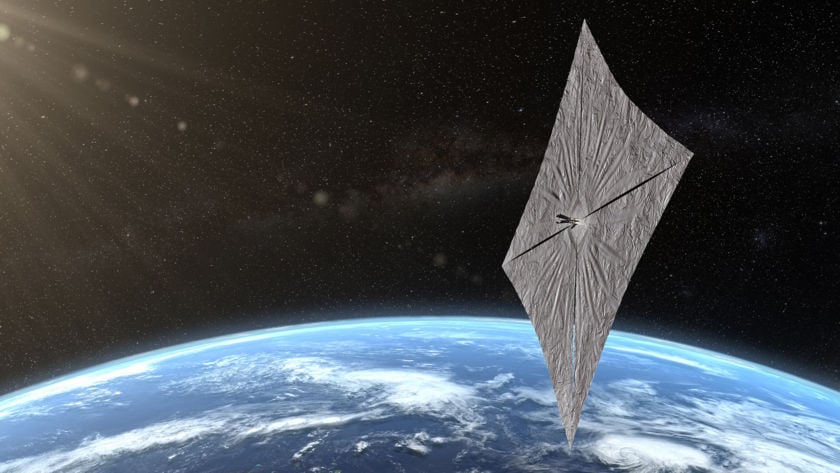Solar storms captured the imagination of much of the American public earlier this year when auroras were visible well south of their typical northern areas. As the Sun ramps into another solar cycle, those storms will become more and more common, and the dangers they present to Earth's infrastructure will continue to increase. Currently, most of our early warning systems only give us a few minutes warning about a potentially destructive impending geomagnetic storm event. So a team of researchers from Sapienza University in Rome and the Italian Space Agency proposed a plan to sail a series of detectors to a point out in space where they could give us an early warning. And they want those detectors to stay on station without rockets.
The mission, known as Helianthus, the official name for a sunflower, was initially described at the 6th International Symposium on Space Sailing in June 2023. In a presentation, the Italian scientists explained the mission objective as providing different alarm levels for geomagnetic storms. But more importantly, the mission design would give humanity 100 minutes of warning for fast-moving solar storms, and a large solar sail would entirely control the mission.
Current warning times for solar storms are only a few minutes at best, as the detectors watching for them are located in Low Earth Orbit. To provide much earlier warning times, Helianthus would place a series of specially designed detectors at a point known as sub-L1 in the Sun/Earth system. While it's unclear what exactly "sub-L1" means in this context, a typical Sun/Earth Lagrange point is about 1.5 million km toward the Sun—about four times as far away as the Moon is from Earth.
Fraser has a soft spot for solar sails, as he describes here.Getting there using a solar sail is the hardest part of the Helianthus mission. Most solar sails use photons to push themselves outward in the solar system since the source of those photons is the Sun, which is, by definition, the inner part of the solar system. So, getting to a point closer to the Sun than the Earth and then staying there seems counterintuitive.
How they will do so is the subject of one of a series of papers from the research team behind the project. Others describe the instrumentation, such as a lightweight coronograph and an x-ray spectrometer, and even structural components, such as the booms used to deploy the solar sails and the membranes those sails would be made of.
Some of the most interesting research described in these papers shows how Helianthus would hold station at a sub-L1 point while still having its solar sail fully deployed. Instead of using rockets for station-keeping, the mission plans to use a series of electrochromic or liquid-crystal actuators to make approximately four station-keeping maneuvers a year.
Solar sails have been a concept of awhile - Fraser explains what they do.Driving the development of most of these systems and methodologies is an interest from the Italian Space Agency to improve workforce development in these areas. As stated in one of the papers, they intend to achieve "challenging national development" regarding solar-sail propulsion. And the geomagnetic storm tracker isn't their only use-case - the same researchers also planned out an Earth-Mars transfer orbit that uses the same solar propulsion technology.
For now, it's unclear whether Helianthus has the financial backing to make it to the finish line for actual deployment. While some prototypes of the lightweight instrumentation have been built, there is still a lot of engineering work to do before any such solar-sail mission sees the light of day. If it is to do so, the Italian Space Agency must show how committed they are to that idea.
Learn More:
Boni et al. - Structural response of Helianthus solar sail during attitude maneuvers
Vupetti et al. - ASI Project Helianthus: Solar-Photon Sailcraft for Geostorm Early Warning
UT - Solar Sails Could Reach Mars in Just 26 Days
UT - NASA’s New Solar Sail Has Launched and Will Soon Deploy
Lead Image:
An illustration of the Light Sail 2 craft with its solar sails deployed.
Image Credit: Josh Spradling / The Planetary Society
 Universe Today
Universe Today
